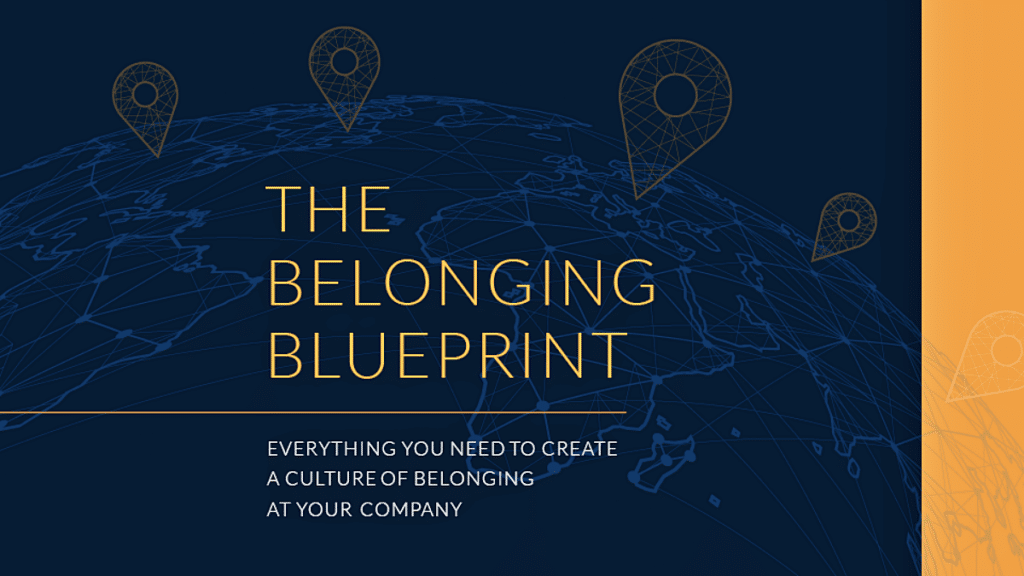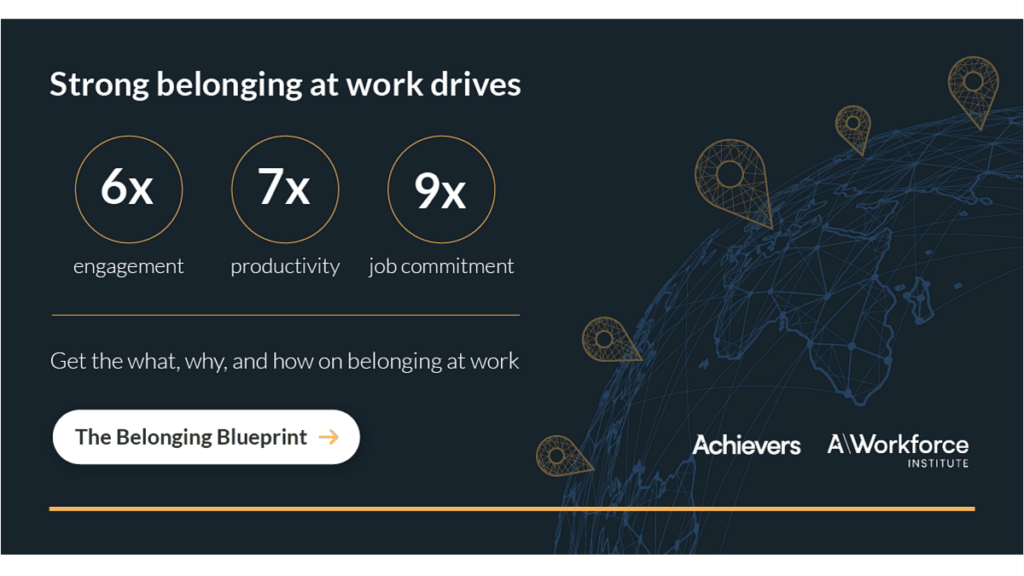Estimated reading time: 5 minutes
(Editor’s Note: Today’s article is brought to you by our friends at Achievers, the industry leading employee experience platform. They were recently awarded first place by HRO Today for their customer satisfaction ratings. Congrats to them and enjoy the article!)
As an HR professional, I’m sure I’m not alone in reading the 2024 workplace predictions that come out this time of year. I always like to see if the predictions confirm what I’m seeing in the business world. And for 2024, I’m noticing some common themes.
- Performance and productivity will remain a primary focus.
- HR Technologies, specifically artificial intelligence, will continue to evolve.
- Wellbeing programs will be a key differentiator for organizations.
And diversity, equity, inclusion, and belonging (DEIB) will remain a priority. Which is what I want to talk about today. Specifically, belonging.
I recently got my hands on the Achievers report “The Belonging Blueprint” which talks about everything organizations need to create a culture of belonging. One of the pieces of the report that immediately grabbed my attention was the welcome from Kumari Williams, vice president of belonging and diversity at Workday. I really liked the way that Williams explained how belonging plays a role in the employee experience, performance, and wellbeing.
Belonging is a fundamental human need that plays a crucial role in shaping our overall wellbeing and satisfaction, both in personal and professional contexts. When individuals feel a sense of belonging within their workplace, they are more likely to be happier, healthier, and more productive. Moreover, they tend to stay with the company for longer periods, contributing to increased stability and continuity within the organization.
– Kumari Williams
I continue to hear that one of the reasons that DEIB efforts fail is because organizations spend too much time talking and not enough time doing. I also hear that organizational efforts fail because they are too focused on the “D” (diversity) and not enough on the “B” (belonging). The latest research from Achievers supports that anecdotal feedback.
- 26% of employees have a strong sense of belonging,
- 43% have a moderate sense, and
- 31% have a low sense of workplace belonging.
Couple these research findings with Williams’ comments about belonging shaping job satisfaction and it makes an instant and important connection. Organizations with a strong sense of belonging will have better employee experiences, better performance and outcomes, and better employee retention.
5 Pillars of Workplace Belonging
I will admit that building a culture of belonging can be hard. Even if the definition of belonging is easy. Achievers defines it as “an experience of connection, security, and community – feeling at home in one’s place, without reservation”. I like to say that belonging means being able to bring your whole authentic self to work.
In their report, Achievers introduces a Belonging Model with five pillars – welcomed, known, included, supported, and connected. Here’s a brief description of each pillar.
WELCOMED is focused on integrating employees into the organization. This applies to new employees as well as people who are taking on a new role within the same company. Organizations should have structured onboarding programs for new hires and internal mobility.
KNOWN means that employees are recognized as themselves. This doesn’t have to be intrusive about someone’s personal life. One of the first things I think of when it comes to getting to know someone is understanding how they like to work. It reminds me of the concept of a personal user manual. Managers need to learn how employees like to work and be productive. Employees need to learn how their manager likes to work so they can effectively “manage up”.
INCLUDED is exactly that … a person feels that they are included to participate. I recently wrote about the SMARTIE model, which is a variation of the SMART model adding an “I” for inclusion and “E” for equitable. When the organization is making decisions, they need to have the right people in the room.
SUPPORTED is focused on giving employees the support they need to be successful. This includes tools, training, teamwork, and management support. If organizations want employees to do their best work – and we all know they do – then they need to set employees up for success. Not just when they’re a new hire, but all along the employee experience.
CONNECTED means that employees are able to build and maintain relationships across the organization. This doesn’t mean that employees have to be besties with everyone. It does mean that employees should feel comfortable interacting with others in the company in terms of feeling psychologically safe to have conversations and share feedback.
One of the things that I liked in reading the research and learning about the five pillars is how Achievers provided a roadmap to focus on belonging. Because while belonging sounds easy to talk about, it can be challenging to bring it into an existing organizational culture.
Employees Stay Where They Feel They Belong
Today, I’ve only shared a high-level overview of The Belonging Blueprint report. If you want to learn more, and I hope you do … you can download the full report on the Achievers’ website.
And, Kumari Williams will be chatting with Dr. Natalie Baumgartner, chief workforce scientist at Achievers on Wednesday, December 13, 2024 / 2p Eastern about the report and how organizations can improve belonging in the workplace. I realize the webinar is late notice, so if you’re already booked, sign up anyway to get the recording.
Creating a strong sense of belonging will give your employees better experiences, better performance and outcomes, and better employee retention. Organizations can bring a diverse group of employees together, but if they don’t make that group feel like they belong, then employees will leave. I know this sounds obvious, but I’ll say it anyway. People don’t want to stay where they don’t feel that they belong.
The post Organizations: The Employee Experience Starts with Belonging appeared first on hr bartender.





0 Commentaires